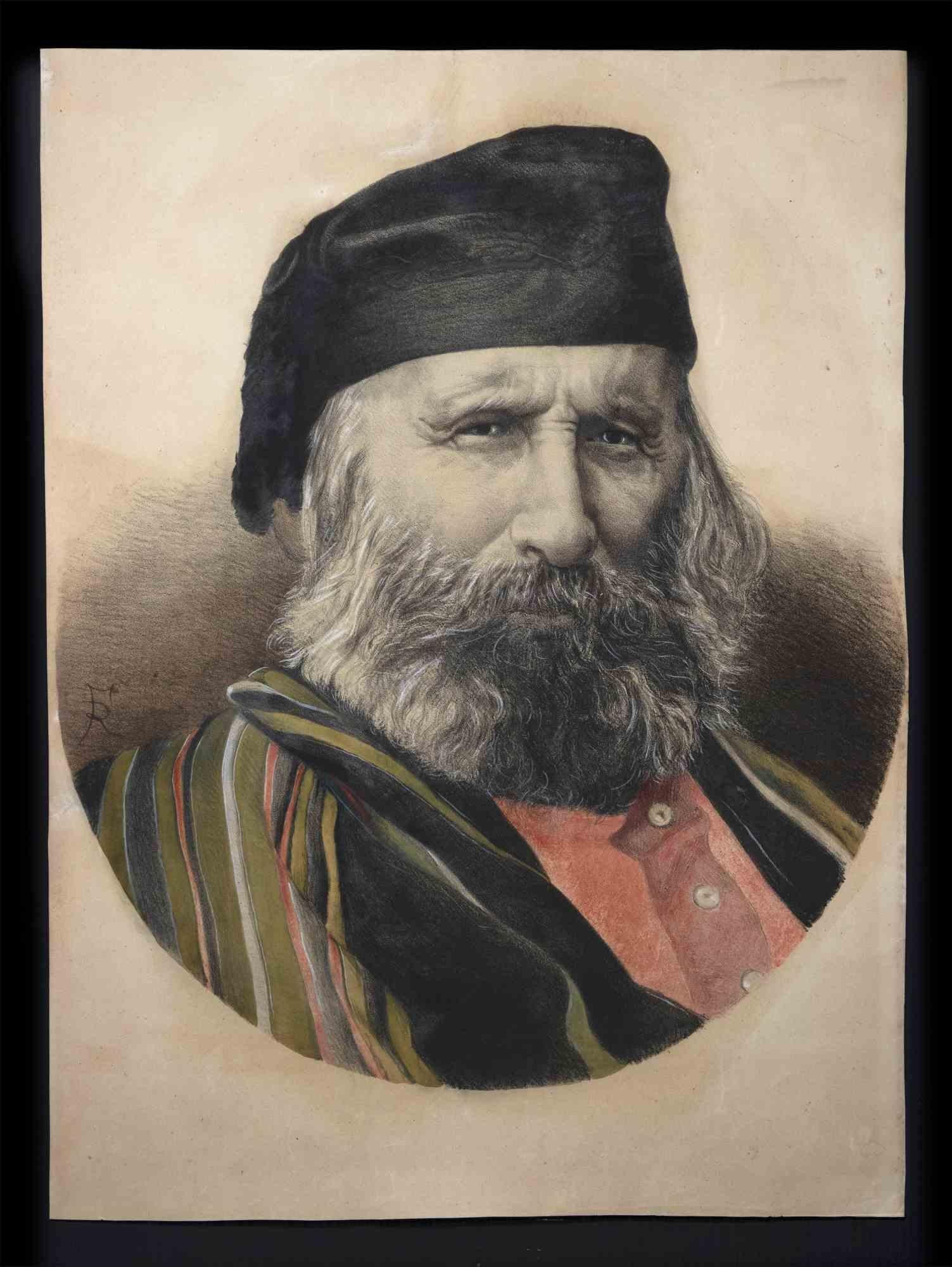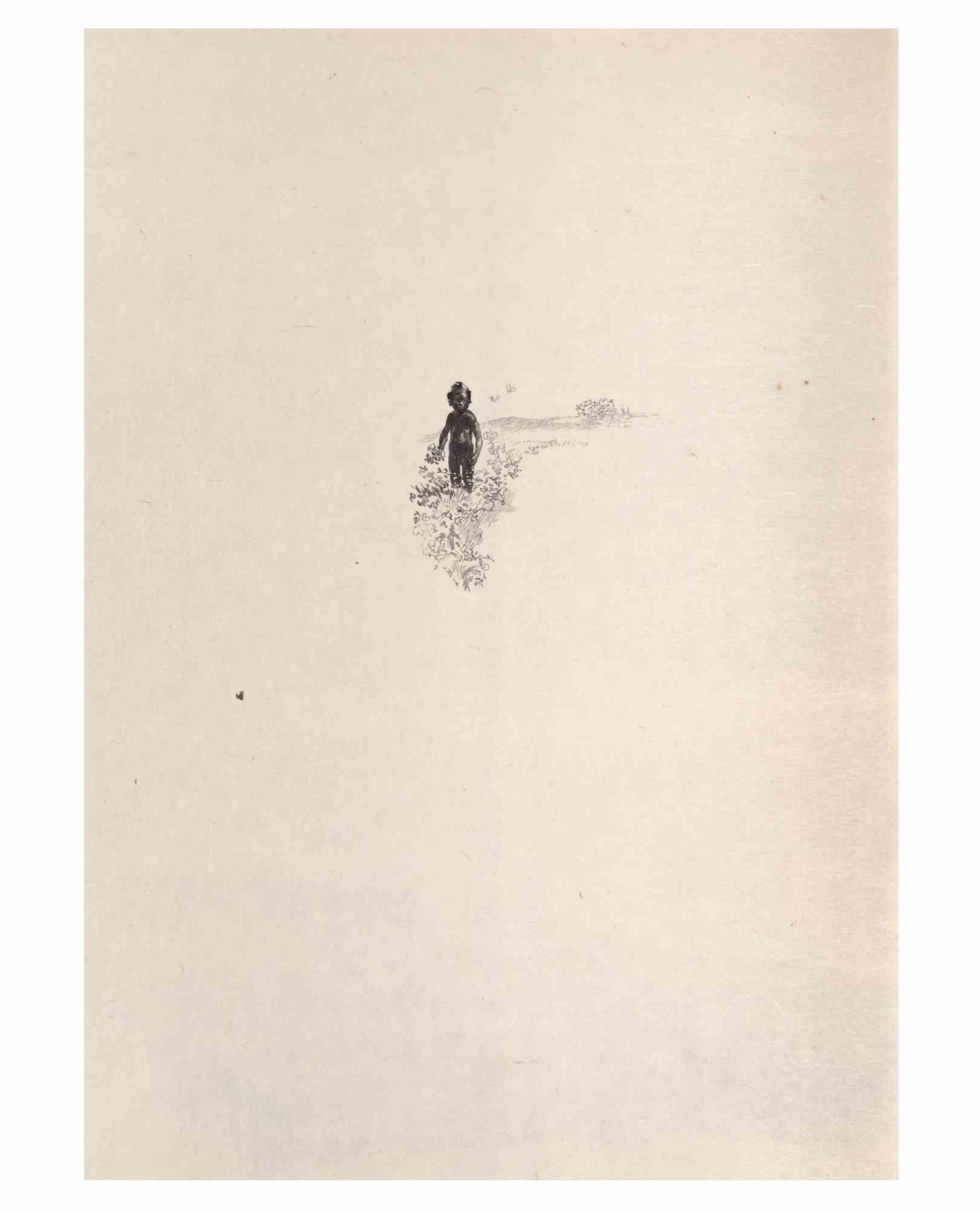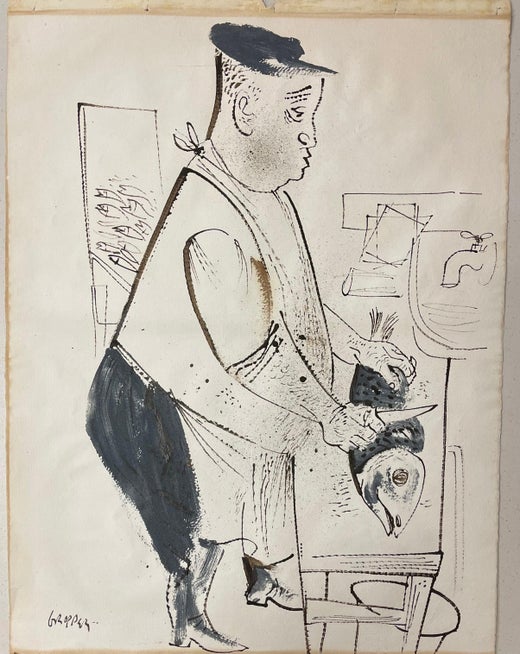William GropperJewish Shtetl Mother-in-law Klezmer Wedding Dance Judaica Lithograph Yiddish WPA
About the Item
- Creator:William Gropper (1897 - 1977, American)
- Dimensions:Height: 14 in (35.56 cm)Width: 11 in (27.94 cm)
- Medium:
- Movement & Style:
- Period:
- Condition:good. minor wear commensurate with age. frame has wear and very minor chip to extreme corner of glass.
- Gallery Location:Surfside, FL
- Reference Number:1stDibs: LU3828972022
William Gropper
William Gropper was a painter and cartoonist who, with caricature style, focused on social concerns. Gropper was born on December 3, 1897, in New York. William Gropper was a student of Robert Henri and George Bellows at the Ferrer School from 1912–15. During the 1930s, working as a part of the Federal Arts Project, he produced some of the most gripping social protest works of the Great Depression. His subjects included industrial strikes, especially in coal mining and steel-production centers. Gropper did much illustration-cartoon work for the New York Tribune newspaper, Vanity Fair magazine and the politically left-wing publication, New Masses. Some of his other pieces focused on the hypocrisy of government figures, especially members of the United States Senate. Gropper died on January 6, 1977, in Manhasset.
- ShippingRetrieving quote...Ships From: Surfside, FL
- Return PolicyA return for this item may be initiated within 3 days of delivery.
- Large George Grosz 1923 Lithograph Die Rauber German Expressionism WPA RealismBy George GroszLocated in Surfside, FLFrom The robbers. lithographs by George Grosz for the drama of the same name. photolithography on watermarked paper. 19 X 25.5 inches (sheet size). This is not hand signed or numbe...Category
1930s American Modern Figurative Prints
MaterialsLithograph
- Large George Grosz 1923 Lithograph Die Rauber German Expressionism WPA RealismBy George GroszLocated in Surfside, FLFrom The robbers. lithographs by George Grosz for the drama of the same name. photolithography on laid paper. 19 X 25.5 inches (sheet size). This is not hand signed or numbered in ...Category
1930s American Modern Figurative Prints
MaterialsLithograph
- Large George Grosz 1923 Lithograph Die Rauber German Expressionism WPA RealismBy George GroszLocated in Surfside, FLFrom The robbers. lithographs by George Grosz for the drama of the same name. photolithography on watermarked paper. 19 X 25.5 inches (sheet size). This is not hand signed or numbe...Category
1930s American Modern Figurative Prints
MaterialsLithograph
- Women, Dishes, Shtetl Americana Judaica Lithograph WPA Social Realist ArtistBy William GropperLocated in Surfside, FLHand signed in pencil and numbered with Roman numerals 8/24. A very small edition. Old Lower East Side of New York or East European Shtetl. Orthodox Jewish Rabbi having a glass of t...Category
Mid-20th Century Modern Figurative Prints
MaterialsLithograph
- Rabbi, Cup of Tea, Shtetl Americana Judaica Lithograph WPA Social Realist ArtistBy William GropperLocated in Surfside, FLHand signed in pencil and numbered with Roman numerals 8/24. A very small edition. Old Lower East Side of New York or East European Shtetl. Orthodox Jewish Rabbi having a glass of t...Category
Mid-20th Century Modern Figurative Prints
MaterialsLithograph
- Sephardic Jew Fez Hat Jewish Shtetl Americana Judaica Lithograph WPA Yiddish ArtBy William GropperLocated in Surfside, FLHand signed in pencil and numbered with Roman numerals 8/24. A very small edition. Old Lower East Side of New York or East European Shtetl. Yenta gossips in the kitchen peeling. hum...Category
Mid-20th Century Modern Figurative Prints
MaterialsLithograph
- Portrait of Giuseppe Garibaldi - Original Lithograph - Early 20th CenturyLocated in Roma, ITPortrait of Garibaldi is an original Modern Artwork realized in the early 20th Century by Anonymous artist. Lithograph on paper. The artwork is depicted through soft stokes in a w...Category
Early 20th Century Modern Figurative Prints
MaterialsLithograph
- Woman - Lithograph by Roger Chapelain-Midy - 1971Located in Roma, ITThe Rest is an original colored lithograph realized by the artist Roger Chapelain-Midy in the 1971. Hand-signed by the artist on the lower right. Numbered on the lower left. Edi...Category
1970s Modern Figurative Prints
MaterialsLithograph
- Petits Contes à ma Sœur - Lithograph by Hégésippe Moreau - 1838Located in Roma, ITPetits Contes à ma Sœur is a Lithograph on paper realized by Hégésippe Moreau in 1838. The artwork is in good condition. Hégésippe Moreau (1810-1838) was a French lyric poet. The r...Category
1830s Modern Figurative Prints
MaterialsLithograph
- Petits Contes à ma Sœur - Lithograph by Hégésippe Moreau - 1838Located in Roma, ITPetits Contes à ma Sœur is a Lithograph on paper realized by Hégésippe Moreau in 1838. The artwork is in good condition. Hégésippe Moreau (1810-1838) was a French lyric poet. The r...Category
1830s Modern Figurative Prints
MaterialsLithograph
- Petits Contes à ma Sœur - Lithograph by Hégésippe Moreau - 1838Located in Roma, ITPetits Contes à ma Sœur is a Lithograph on paper realized by Hégésippe Moreau in 1838. The artwork is in good condition. Hégésippe Moreau (1810-1838) was a French lyric poet. The r...Category
1830s Modern Figurative Prints
MaterialsLithograph
- Petits Contes à ma Sœur - Lithograph by Hégésippe Moreau - 1838Located in Roma, ITPetits Contes à ma Sœur is a Lithograph on paper realized by Hégésippe Moreau in 1838. The artwork is in good condition. Hégésippe Moreau (1810-1838) was a French lyric poet. The r...Category
1830s Modern Figurative Prints
MaterialsLithograph






